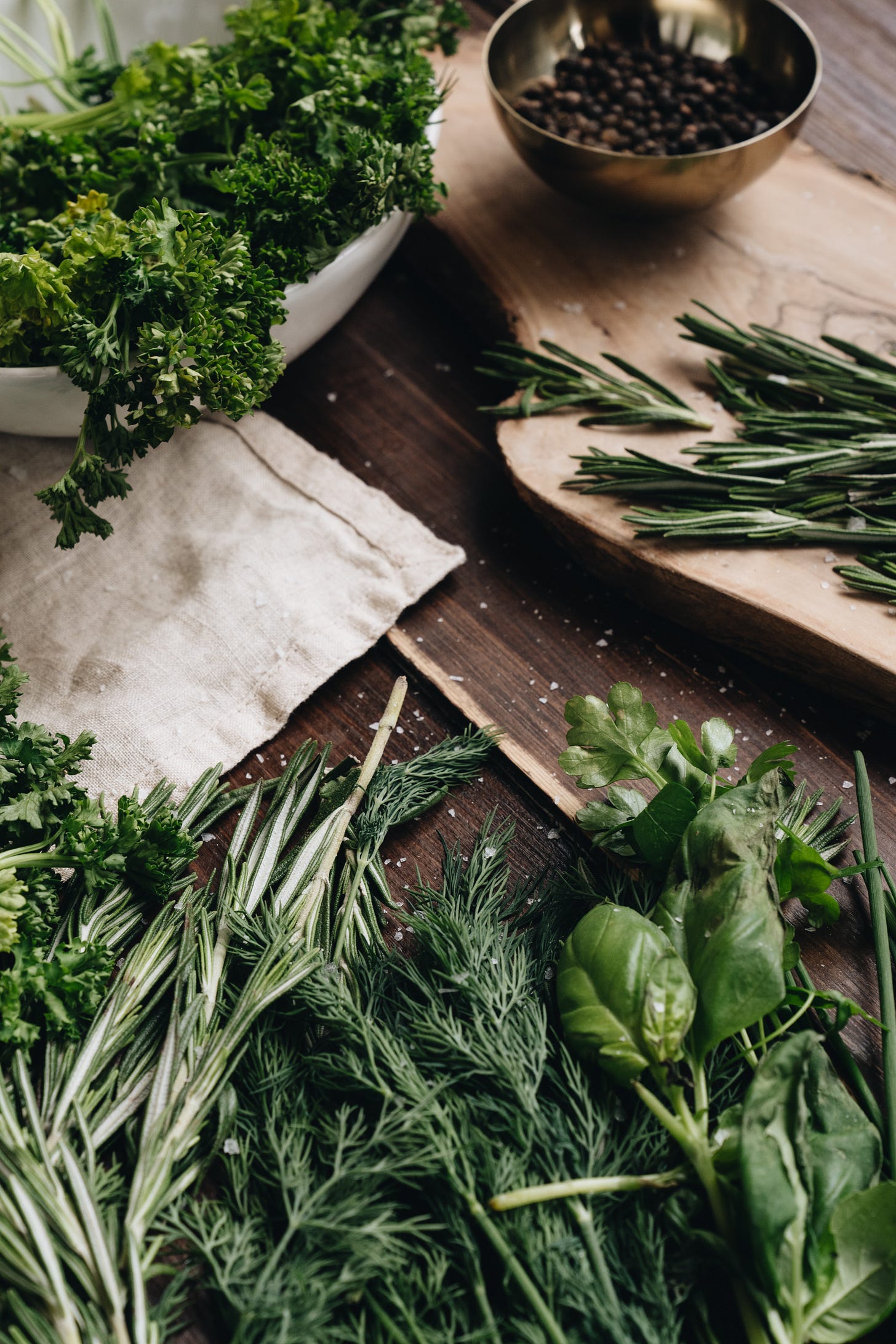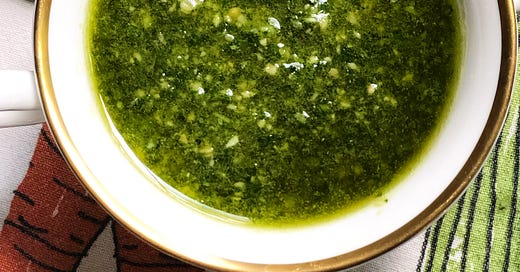There’s a wonderful secret that gardening reveals, but only after you shed a few tears of frustration.
If you tried to grow anything, especially anything edible, like herbs, it seems to be either feast or famine. The dill grows a foot high, and then shrivels. The parsley never quite gets full and bushy. And the basil – well, after a few harvests of plucking the lovely aromatic leaves, you’re left with spindly stems and not much else.
The beauty of boldness
That’s because novice gardeners often fail to realize one important thing: when it comes to creating a flourishing garden, it pays to be both patient and bold. A little bit of ruthless pruning can lead to the most magnificent growth.

Our tendency is to let things grow tall, and fast, all the while harvesting as the plants grow. After all, isn’t that the objective? To be able to walk outside and grab a handful of aromatic herbs for dinner connects us, if ever so briefly, with the good green earth.
But cutting back, ever so thoughtfully, not only inspires new growth; it also builds the plant’s strength and resilience. And if you are growing basil, that resilience results in full and lush plants for you to make culinary magic happen. One of my favourite places to shop for beautiful seasonal produce, 19th Avenue Farmer’s Market, recently did this video that shows you exactly how to make sure your basil grows lush and full.
Artfully pruning our lives
In life, as in gardening, a little bit of artful pruning can lead to unexpected growth.
For some of us, it might be shedding the baggage of “stuff” - the accumulation of things that can grow around us, like a mint plant gone wild. For others, it might be small, incremental but more profound cutting back: pruning beliefs that no longer serve us, relationships that crowd out the air around us, habits that stunt our ability to stretch and expand.
Like pinching off a few small leaves on a basil plant, thoughtful, considered trimming back can help us grow stronger, more resilient and truly flourish. As we tend our gardens, using a bit of that ancient wisdom for tending our own wayward growth is sometimes the best gardening of all.
Classic Pesto alla Genovese
From The Classic Italian Cookbook, Marcella Hazan
enough for 6 servings of pasta
As with many Italian specialities, pesto experts have strongly held views on just about everything to do with this very simple recipe. Butter or no? Toast the pine nuts or leave them plain? A mix of cheeses or just one? And perhaps most hotly contested of all - mortar and pestle or food processor?
I am not here to argue the merits of which pesto recipe is the “best”, or which variation might be the definitive one. What I know to be true is this: if Marcella Hazan makes it thus, and if she uses a food processor to make pesto (as do many Italians in Liguria), then that’s all right with me.
With basil in full force and available in large bundles at the farmers’ markets, feel free to double or triple this recipe, and make extra for freezing. If you do, take note of Marcella’s brilliant tip to freeeze the pesto minus the butter and cheese. Adding those two ingredients in once you’ve thawed the pesto makes for a much fresher and brighter tasting sauce.
Ingredients
2 cups tightly packed basil leaves
2 tablespoons pine nuts
½ cup olive oil
2 garlic cloves, lightly smashed and peeled
1 teaspoon salt
½ cup grated Parmigiano Reggiano cheese
2 tablespoons grated pecorino Romano cheese
3 tablespoons butter, room temperature
Put basil, olive oil, pine nuts, garlic and salt into the bowl of a food processor. Process until the ingredients are evenly blended but not puréed. Scrape the pesto into a medium bowl and stir in the grated cheeses with a spatula. Finally, fold in the softened butter, incorporating it evenly into the pesto.
To freeze: Do not add cheese and butter; add to thawed pesto just before serving. Top with a thin layer of olive oil, which will help keep pesto green.







You'll like this:
Several years ago, I worked for a chef who years before worked for an Italian family down in the Caribbean. They made A LOT of pesto. They made so much pesto that they discovered that using a meat grinder to make it was as good as any other method and very quick. We happened to have a small meat grinder at this restaurant I worked in and with the chef's guidance, I gave it a try. It worked like a dream - 10 lbs of fresh basil, raw garlic, toasted pine nuts and chunks of Parmigiano. Just pushed it all through the feed tube and I was done in no time.
It smelled heavenly, too!